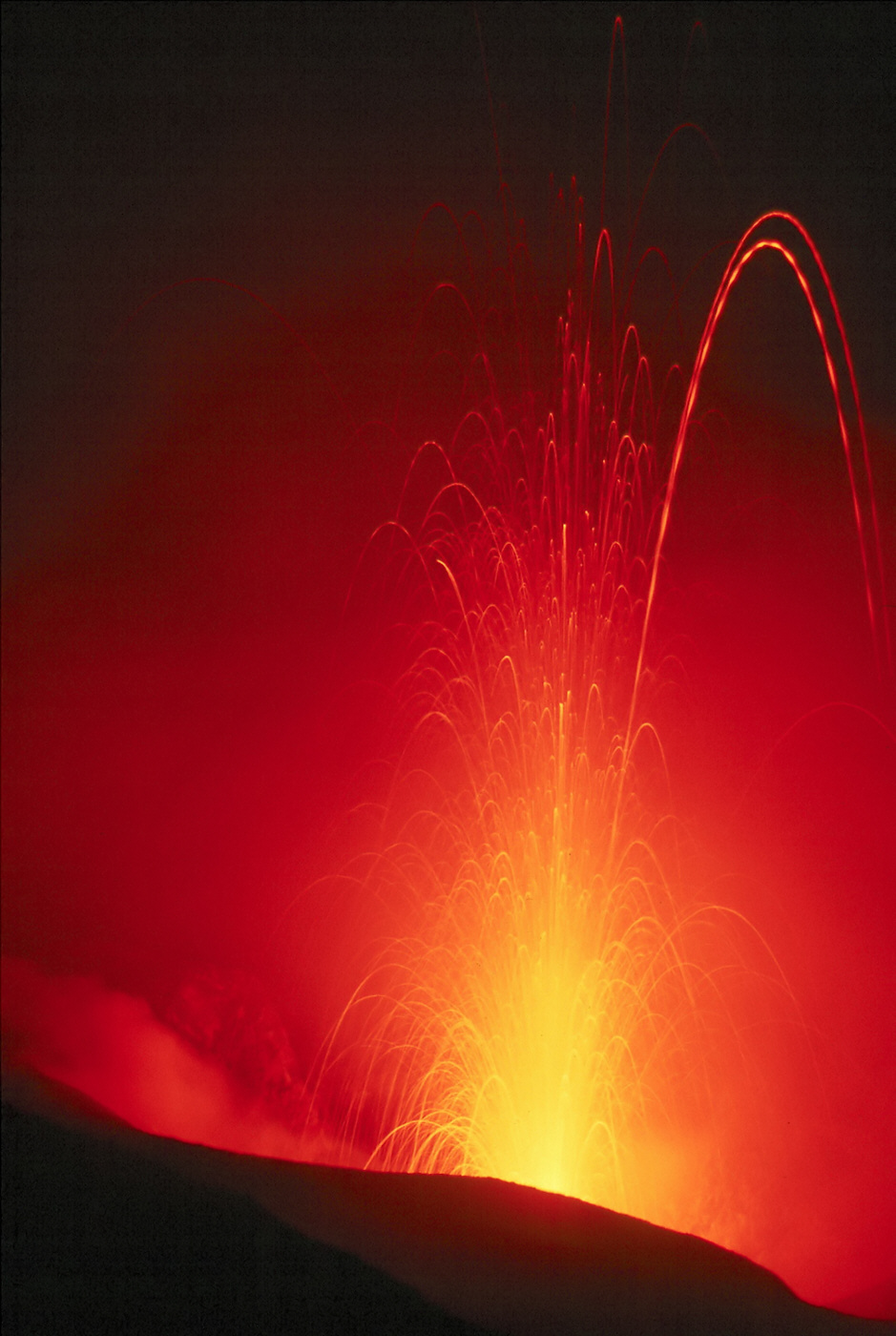Gas slug on:
[Wikipedia]
[Google]
[Amazon]
 A gas slug is a conglomerate of
A gas slug is a conglomerate of
 A gas slug is a conglomerate of
A gas slug is a conglomerate of high pressure
In science and engineering the study of high pressure examines its effects on materials and the design and construction of devices, such as a diamond anvil cell, which can create high pressure. By ''high pressure'' is usually meant pressures of th ...
gas bubbles that forms within certain volcano
A volcano is a rupture in the crust of a planetary-mass object, such as Earth, that allows hot lava, volcanic ash, and gases to escape from a magma chamber below the surface.
On Earth, volcanoes are most often found where tectonic plates ...
es, the agitation of which is a key driving factor in Strombolian eruptions. They start out as small bubbles of gas inside of volcanic magma
Magma () is the molten or semi-molten natural material from which all igneous rocks are formed. Magma is found beneath the surface of the Earth, and evidence of magmatism has also been discovered on other terrestrial planets and some natura ...
. These accumulate into one large bubble, which starts to rise through the lava plume.
Once this accumulated slug reaches the top of the column and comes in contact with air, it bursts with a loud pop because of the lower air pressure
Atmospheric pressure, also known as barometric pressure (after the barometer), is the pressure within the atmosphere of Earth. The standard atmosphere (symbol: atm) is a unit of pressure defined as , which is equivalent to 1013.25 millibars ...
, throwing magma into the air in the typical lava arc of a Strombolian eruption. This type of eruption is episodic, non-damaging to its source vent, and one of the slowest forms of activity, with the ability to sustain itself for thousands of years.
Although the effect of gas slugs in lava is well understood, how they form is not well understood, but recent research suggests that they can form as deep as under the surface.
References
Volcanic degassing Gas explosions Thermodynamic processes {{volcanology-stub